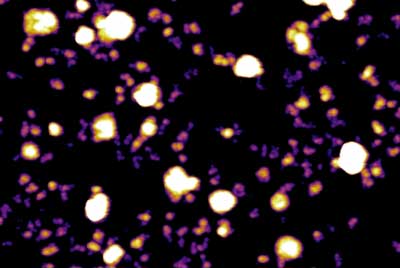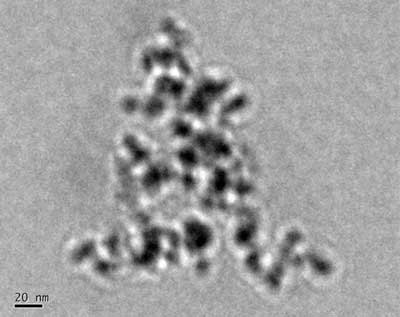
Wednesday, February 21, 2018
Reinventing the inductor
Using a new materials-based approach yields a smaller, higher-performing alternative to the classic design.
Researchers bring high res magnetic resonance imaging to nanometer scale
A new technique that brings magnetic resonance imaging to the nanometer scale with unprecedented resolution will open the door for major advances in understanding new materials, virus particles and proteins that cause diseases like Parkinson's and Alzheimer's.

Scientists discover new nanoparticle, dubbed exomeres
A new cellular messenger discovered by scientists may help reveal how cancer cells co-opt the body's intercellular delivery service to spread to new locations in the body.

'Memtransistor' brings world closer to brain-like computing
Combined memristor and transistor can process information and store memory with one device.

Using nanodiamonds to put squeeze on materials
Molecular technique holds potential to make chemistry greener and more precise.

Tuning quantum light sources
First known material capable of emitting single photons at room temperature and telecom wavelengths.

Robotic crystals that walk n'roll
Scientists may have come a step closer to innovating soft robots to care for people. Its material, however, is something you may have never expected.

A nanowire array to screen drugs for neurodegenerative diseases
Engineers develop wires that penetrate neurons and measure their activity.

Spatial structure of bound hole states in black phosphorous
Chemists have discovered that the bound states of 'holes' in black phosphorus changes from an extended ellipse into a dumbbell shape when it is electrically excited, providing new insights for its use in next generation electronic devices.

Rapid detection of pesticide residue with nanoparticles
Food scientists have developed polystyrene coated magnetic nanoparticles which allow rapid screening of trace amounts of pesticide residue in vegetable crops.

Tiny, light-powered wires to modulate brain's electrical signals
A new study offers a new avenue to shed light on - and perhaps someday treat - brain disorders.

Single atoms in nano-cages
Tiny cages can trap and release inert argon gas atoms, allowing their further study and providing a new way to capture rare gases.

MEMS chips get metatlenses
Combining metasurface lenses with MEMS technology could add high-speed scanning and enhance focusing capability of optical systems.

Splitting crystals for 2D metallic conductivity
Adding oxygen atoms to a perovskite-like crystal material splits it into layers, giving it unique electrical properties.

Subscribe to:
Posts (Atom)
